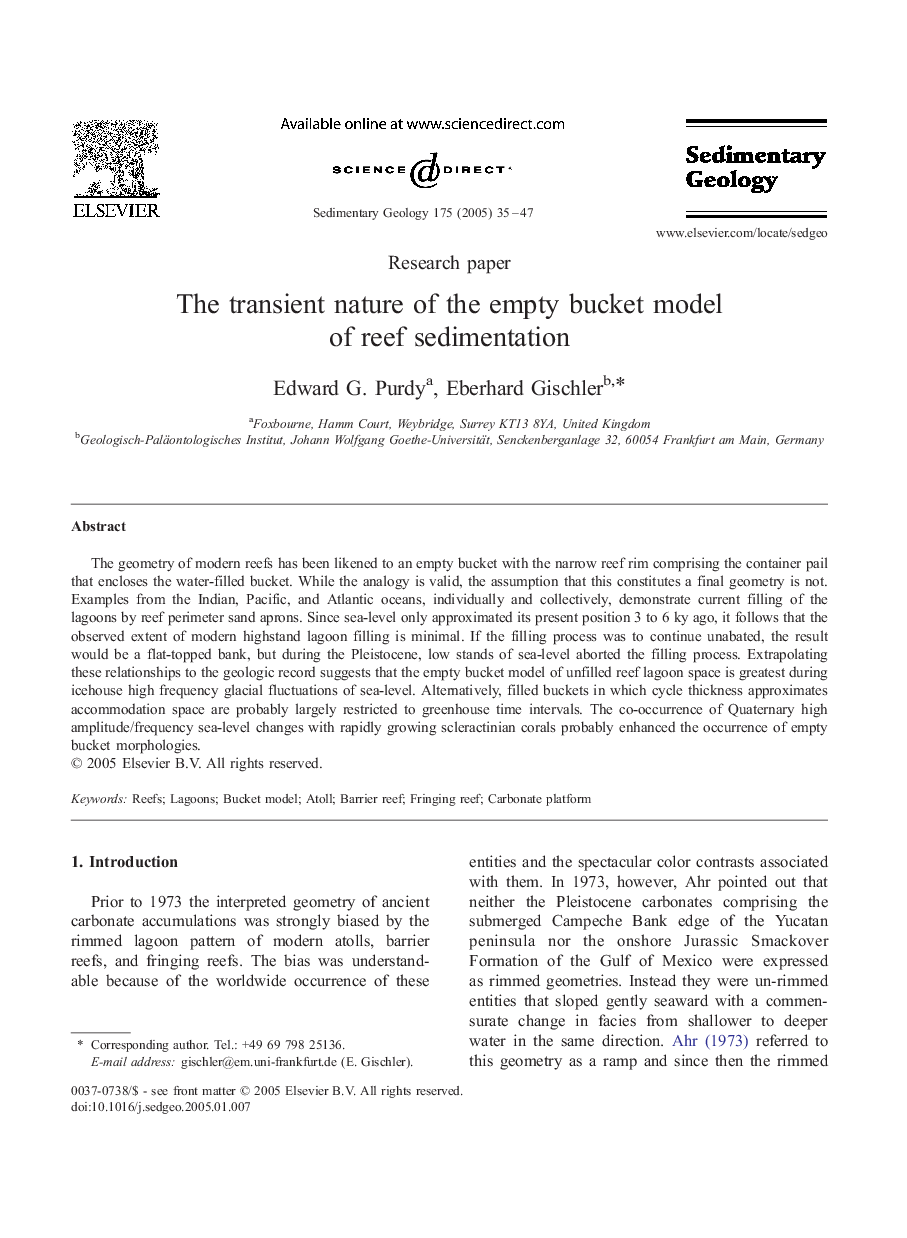| Article ID | Journal | Published Year | Pages | File Type |
|---|---|---|---|---|
| 9526160 | Sedimentary Geology | 2005 | 13 Pages |
Abstract
The geometry of modern reefs has been likened to an empty bucket with the narrow reef rim comprising the container pail that encloses the water-filled bucket. While the analogy is valid, the assumption that this constitutes a final geometry is not. Examples from the Indian, Pacific, and Atlantic oceans, individually and collectively, demonstrate current filling of the lagoons by reef perimeter sand aprons. Since sea-level only approximated its present position 3 to 6 ky ago, it follows that the observed extent of modern highstand lagoon filling is minimal. If the filling process was to continue unabated, the result would be a flat-topped bank, but during the Pleistocene, low stands of sea-level aborted the filling process. Extrapolating these relationships to the geologic record suggests that the empty bucket model of unfilled reef lagoon space is greatest during icehouse high frequency glacial fluctuations of sea-level. Alternatively, filled buckets in which cycle thickness approximates accommodation space are probably largely restricted to greenhouse time intervals. The co-occurrence of Quaternary high amplitude/frequency sea-level changes with rapidly growing scleractinian corals probably enhanced the occurrence of empty bucket morphologies.
Related Topics
Physical Sciences and Engineering
Earth and Planetary Sciences
Earth-Surface Processes
Authors
Edward G. Purdy, Eberhard Gischler,
